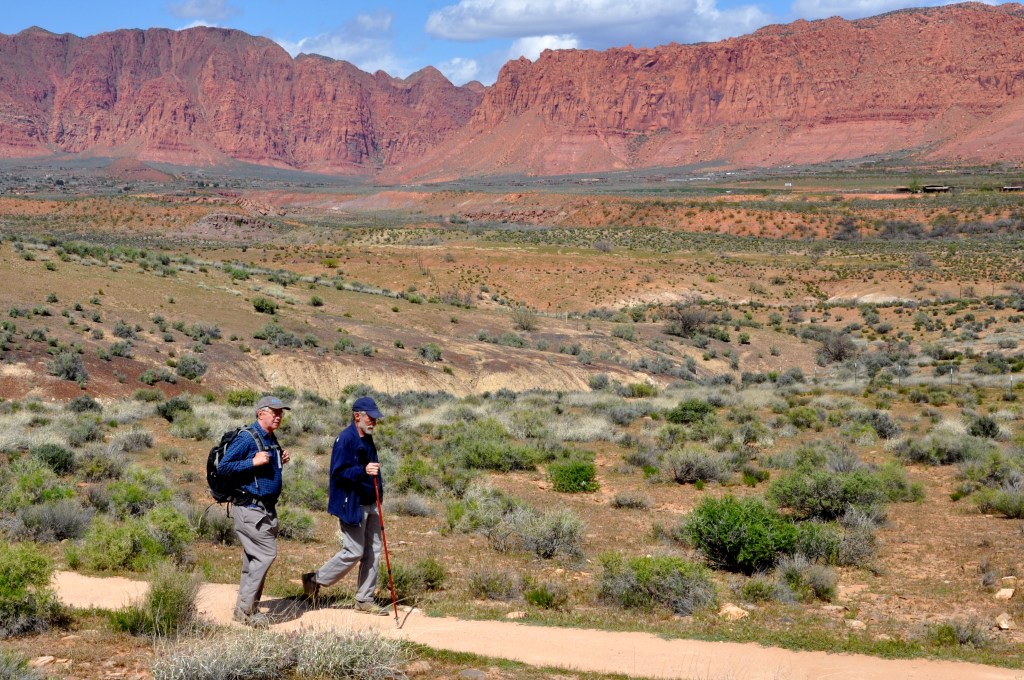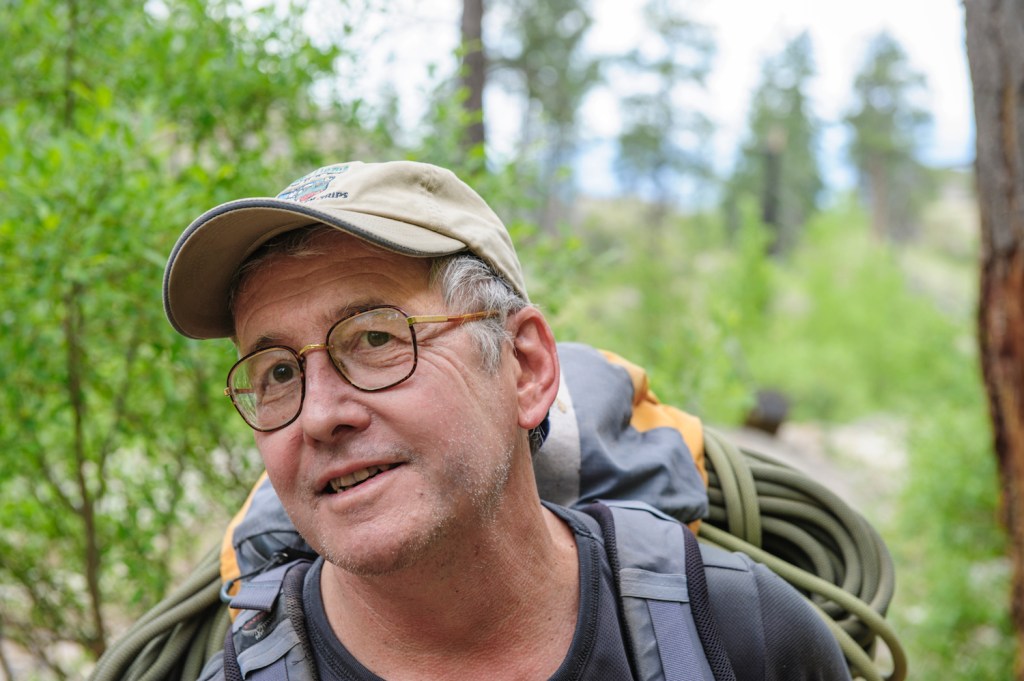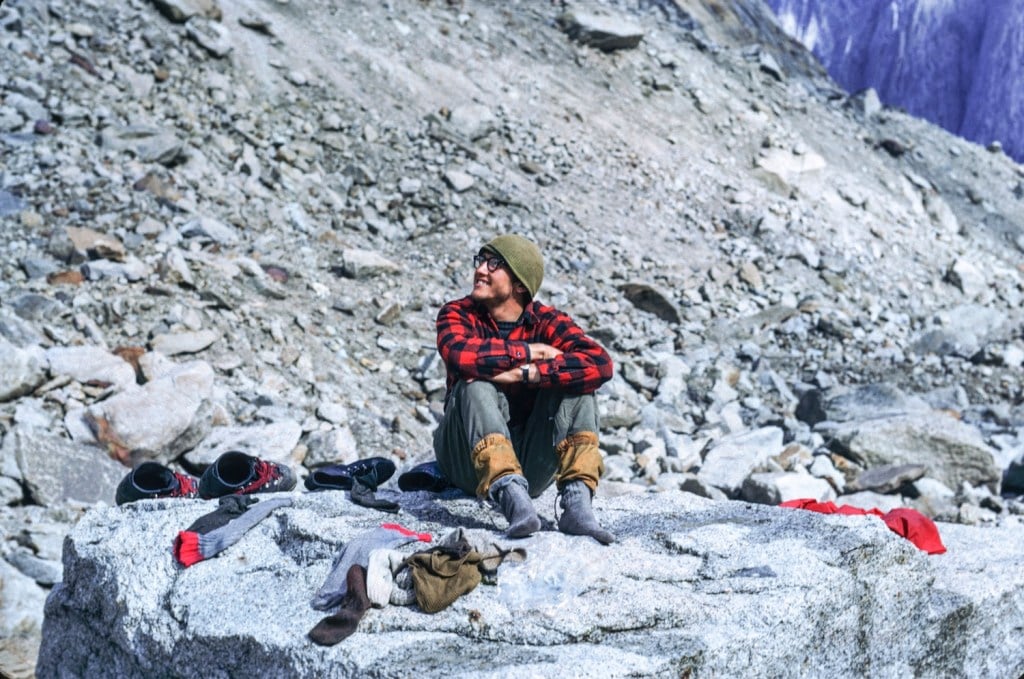With an impressive list of mentees, including Alex Honnold and Jon Krakauer, and 29 books under his belt, David Roberts is nothing short of a legend. Here, he sheds light on the evolution of adventure journalism—and how to make it in today’s tough market.
In the 1960s and 1970s, David Roberts was climbing the hardest routes in Alaska, including the first ascents of the Wickershim Wall on Denali and the east face of Mount Dickey. His dramatic experiences in mountaineering gave him plenty of story fodder and ultimately launched his writing career, in which he specialized in climbing, adventure, and the American Southwest.
Arguably one of the most prolific adventure writers of all time, David Roberts, 74, is still climbing and writing despite battling cancer. Today he says climbing 5-anything, or just getting off the ground, is a good day.
This June, Roberts and his “Old Gang” of climbing buddies met in Mammoth Lakes, California, for their annual reunion. I met up with them to talk about how adventure and writing have changed over the years, and Roberts offered his best advice to young and aspiring writers.

Hiking to see petroglyphs outside of St. George, Utah. Roberts (on the left) with Ed Ward | Photo: Monica Prelle
From a young age you were a serious climber and wanted to become a writer, but you say grad school didn’t teach you anything about how to write. How did you eventually get your start?
At age 22, we had our expedition to Mt. Huntington, which was the most intense and dramatic thing that ever happened to me in my life at that age. We made the first ascent of the west face, which we liked to think was the hardest thing done in Alaska at that point, but on the descent, one of our partners, Ed Bernd, was killed when a rappel anchor failed.
That happened the summer between graduating from Harvard, in math of all majors, and starting at the University of Denver in creative writing. I was plagued by this experience and trying to figure out how to deal with it psychologically, so I finally decided that I should write a book about it. In 1966, I had nine days of spring vacation, so I wrote a chapter a day and finished the book in nine days. To my surprise, Mountain of My Fear was published because it was such a dramatic story. I thought, “Wow, this is easy. I can be a writer.”
But you did not publish another book for many years. What did you do in the meantime?
My princely advance for Mountain of My Fear was $500. I didn’t think you could make a living off of writing, so I figured I would become an academic, teach for a living and write in my spare time. I ended up at Hampshire College in 1970 and taught there for nine years, all the while trying to be a writer in my spare time. It doesn’t work. I’m now convinced—and I’ve been convinced ever since—until you actually pay the bills with what you earn from writing, you don’t take writing seriously.
When did you know you had made it as a writer?
I finally decided, not until I was 37, that I had to quit teaching and really try to earn my living as a writer. I wish I had made that decision a lot sooner. I got a book published when I was 22, but I got my first big break with an article I wrote about having been a first-hand participant in three fatal accidents and why I kept climbing despite that.
This piece was published as “Moments of Doubt.” It was taken off the slush pile by Outside magazine in 1979 and that sort of launched my writing career. Again—because I had these dramatic experiences to write about, not because I was a particularly good writer.
The first several years were quite desperate. I think I made $7,000 the first two years I freelanced, but it got better and better. You can’t make a living writing about climbing, you have to broaden it, so the answer was to write about adventure more generally. Gradually over the years, I expanded my so-called area of expertise to anything to do with adventure, and even more broadly—travel, literature and history.

Roberts on the Angel in Revelation Mountains, AK, 1967 | Photo: Matt Hale
Adventure seems to be an overused or abused term. How has adventure writing changed since you first got your start?
The very notion of adventure has changed and not for the better. With the advent of so-called adventure travel in the mid-1980s, a bunch of companies sold the basically bogus idea that a group trip led by experts including paying customers, who were along to do something somewhat adventurous but basically turned over all of the decision making to the leaders, fostered the idea that adventure was something you can neatly package and sell instead of something planned and executed by yourself.
On the other hand, there are people doing wild and wonderful stuff, as much as there ever were, they just usually don’t get the limelight for it.
Do you think climbing and adventure writing is now mainstream?
When we started climbing in Boulder, Colorado, in the late 1950s and early 1960s we were regarded as total kooks and oddballs, weirdos. Climbing wasn’t chic. In fact, adventure generally was not cool or sexy the way it is today—in America at least. (It was different in Europe.) That’s both good and bad. It’s about time people realized stuff like climbing big mountains in the Himalaya or Alaska is about as great a thing as you can do.
There was no hope of sponsorship when I started out, but now every aspiring snowboarder or mountain biker wants to be a North Face athlete. I think, sadly, you find a lot of younger people who think it’s more important to be sponsored or get a certain number of hits on Facebook than it is to really do something that’s cutting edge. There are climbers who become famous because of Instagram—I don’t even understand that.
Paradoxically, I think it’s harder than ever to make a living as an adventure writer—as a freelance writer for magazines in general. And the cause of that is digital. Digital media has created a market where they pay you next to nothing and expect you to produce, and there are too many people willing to do that. It makes it a tough road.
Does one need to be an adventurer or writer first?
If you are not an adventurer first, forget it. The passion has to be first and foremost—to climb a mountain that no one has climbed or make a marathon traverse of some desert, or try to find the deepest cave in the world.
How does a new writer break into the business and get magazines to pay attention to them?
Oh man, that’s the eternal dilemma. Again I’d say you can’t go into it wanting first and foremost to be an adventure writer, you have to go into it wanting to have adventures. Otherwise, it won’t be authentic. If you say, “Wow, I want to be an adventure writer. What kind of adventure can I concoct that the magazines will buy?” That probably is a recipe for failure from the start. Good editors and publishers can tell the difference.
Good adventure stories often take place in wild, untouched regions. How do you balance writing about adventures with not exploiting special places?
I struggled with that a lot when I started writing because you discover a special place on earth and not too many people have been there and you start writing about it. If you are successful as a writer, you create a whole new market from what you wrote about it. People never would have gone there if they had not heard about it.
I’ve caught a lot of shit over the years for doing that: writing about wonderful places that most people didn’t know about. I had my qualms about if I was selling out. Early on in my freelance career, I told my editor at National Geographic about this conundrum. She said, “Nonsense. If it’s worth doing, it’s worth writing about,” and that’s been my touchstone ever since.

Roberts in Skaha, BC | Photo: Matt Hale
Tell us about your next book on adventure, Limits of the Known (February 2018).
Ever since I got cancer I’ve been really thinking a lot about what my own life as an adventurer has meant in a way that I hadn’t really reflected and sifted through. Getting sick and thinking I might die actually sharpened my eye to try to spell out what the essence of adventure is.
The title is a quote from Fridtjof Nansen, who in 1893 tried to get to the North Pole and got closer than anybody ever had. It is really hard to explain Limits of the Known, but I’d call it a meditation on adventure. But also, my book is a polemic in the sense that I want to make some pretty strong arguments about what is and what isn’t adventure today, what’s bogus and what’s genuine.
We knew by 1880 that Everest was the highest mountain in the world. In 2017, we don’t even know where the deepest cave in the world is. To be a serious caver today is to be like the guy who made first ascents on the hardest routes in the Alps in the ‘50s and ‘60s or the people in the Himalaya who made the first ascents of the 8,000-meter peaks. It’s truly a golden age, yet readers have so far remained oblivious to it or indifferent to it, but it’s the real thing. I counter pose that with guided trips on Everest and very fabricated artificial challenges.
How have greater advances in technology changed what adventure means?
Technology has profoundly changed, and in some ways crippled, the whole business of adventure. So many people who think they are going on adventures truly expect to get rescued if something goes wrong. I don’t just mean bozos who get lost in the woods. Climbers on El Cap fall and break a leg, call for the chopper. Technology we take for granted now, like cell phones, creates an emotional dependency that is really hard to break.
But it didn’t just start with this generation. Cameras changed the whole game profoundly. People including myself pay less attention to what is going on in the moment, even in the middle of an adventure sometimes. They think, “Wow, did I get a good picture of that? I can’t wait to go home and see the pictures.” So the pictures you take and viewing them later almost becomes primary, as opposed to being there and looking and seeing and feeling. That started happening in the 1920s.
What makes an adventure story great?
Pretty much the same thing that makes any article or essay or memoir great—it has to be true and honest and deep. A great adventure piece has to get at the deeper wellsprings of motivation and character. The morality of adventure is all but ignored by most practitioners. Something as simple as whether risking your own life is worth doing or not, as opposed to the possible grief and pain that can be caused if you die.
And of course, a great piece has to have a narrative structure that makes sense. It can’t be canned in the sense of fitting the most obvious and by now clichéd formulas—we thought we were going to die but we survived and we are better men and women for it.
When you think of Jon Krakauer’s two best-selling books Into the Wild and Into Thin Air, they aren’t just about adventure in the sense of telling about the cool things someone did. Those books raise all the deepest human questions like in the death of Chris McCandless, whether you can take ultimate risks in isolation and not have that reverberate through a whole community; it goes even beyond your family.
In Into Thin Air, the jinxed bargain of paying $60,000 to get dragged up Mt. Everest and if you do that, what happens when things go wrong and shit hits the fan and people start dying?
In your experience writing books about your own exploits, what comes first: the adventure or the book proposal?
The best adventure books are not pre-planned. When we went off to Mt. Huntington in 1965 I had no intention of writing a book about it, but suddenly you realize you had an experience that is book-worthy. On the other hand, I’ve written 29 books, so in many cases, you do propose the idea of the book beforehand and then you go out and do it. If you are lucky, you get the contract. The wonderful thing is it never goes the way it is planned.
Going back to Into Thin Air, Jon went off on assignment for Outside magazine to write a humorous piece about Everest, the absurdities of guided climbing. He wrote a very funny piece about Denali a couple years before. It’s a wonderful humorous piece, satire, about people who really shouldn’t be there, but nobody died on Denali. Outside, recognizing the market for that and the strong readership response to “Club Denali,” assigned Jon to go off to Everest to do the same thing.
So in ‘96 he runs into the worst disaster in Everest history and all these people die in one terrible storm. I talked to him right after he got home and he was ridden with guilt about whether he could have saved people’s lives and he said, “To add insult to injury, I don’t even have an article. This can’t possibly fit what Outside hired me to do.” I said, “Jon, nonsense. You have a book.”

Roberts in the Revelation Mountains, AK, 1967 | Photo: Matt Hale
If there is no tragedy or some element of risk, is it still a good adventure story?
It doesn’t have to be about tragedy. Something that is sadly in short supply is good humorous adventure writing. I don’t mean farce, but a story of genuine adventure told with a tongue in cheek, with a sense of ironic dissonance that ultimately amounts to an admirable sense of modesty.
I think of Shipton and Tillman, the great British mountaineering travel writers. Their books are absolute marvels of the light touch and understated narrative, which blends both self-deprecation and yet genuine lyricism. If you read Shipton and Tillman, you know what a wonderful expedition they went on. They were also careful not to overhype it. The whole thing is sort of absurd.
What other advice do you have for aspiring adventure writers?
What I think is profoundly missing in adventure writing is the critical cross-examination of the pursuit that maybe adventure isn’t just a good thing—maybe it really has a selfish side or a vainglorious side. I don’t mean to be a curmudgeon or intend to be laying down rules about how to pursue adventure or how to write about it, but I am dismayed by how formulaic most adventure writing is today.
Maybe adventure is simply useless and if you really want to make a contribution to the world you are not going to do it by climbing a mountain. You might do it by becoming a doctor or an aid worker in a desperate country like a South Sudan or Somalia.
The idea that adventure is a good thing—that is a proposition that needs to be critically examined. How do we know it’s a good thing? I think it’s a good thing because it’s dictated my life. I also recognize what it’s cost me and I don’t mean in just in terms of friends dying, but in aspects of my own character I never fully developed because adventure is ultimately selfish.
You know, if you’re writing about golf, nobody asks you, “How do I become a golf writer?”
Why aren’t you a golf writer?
Golf is truly absurd.
[Ed. note: This interview has been edited for length and clarity.]
